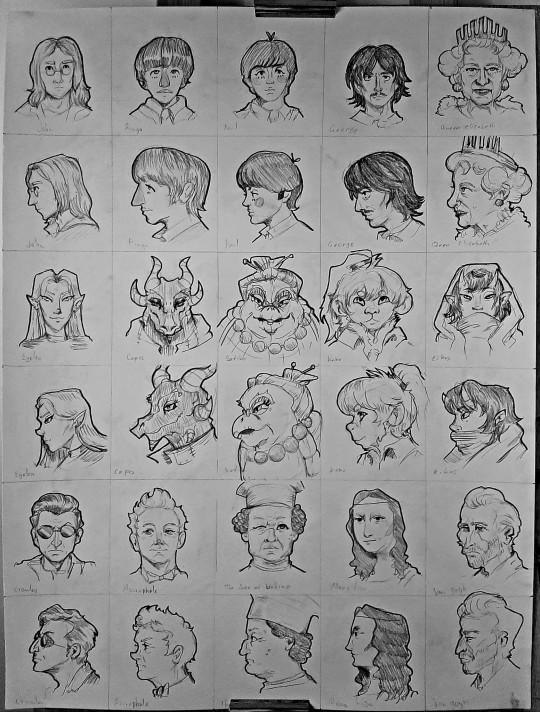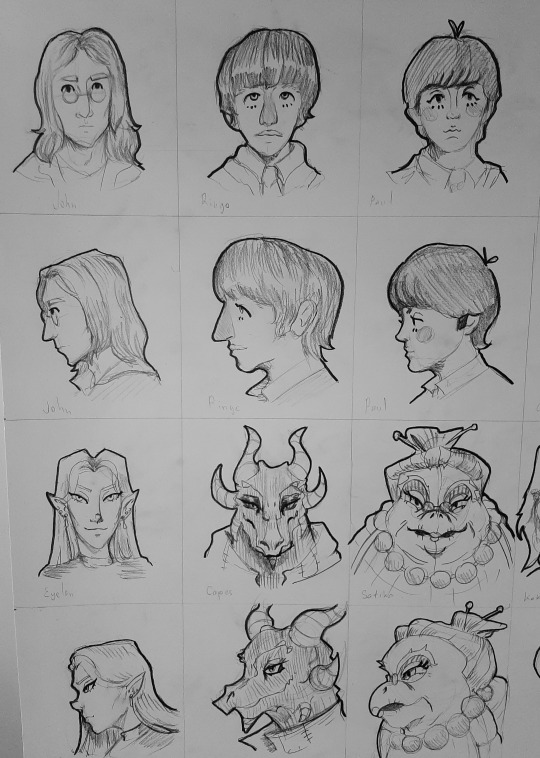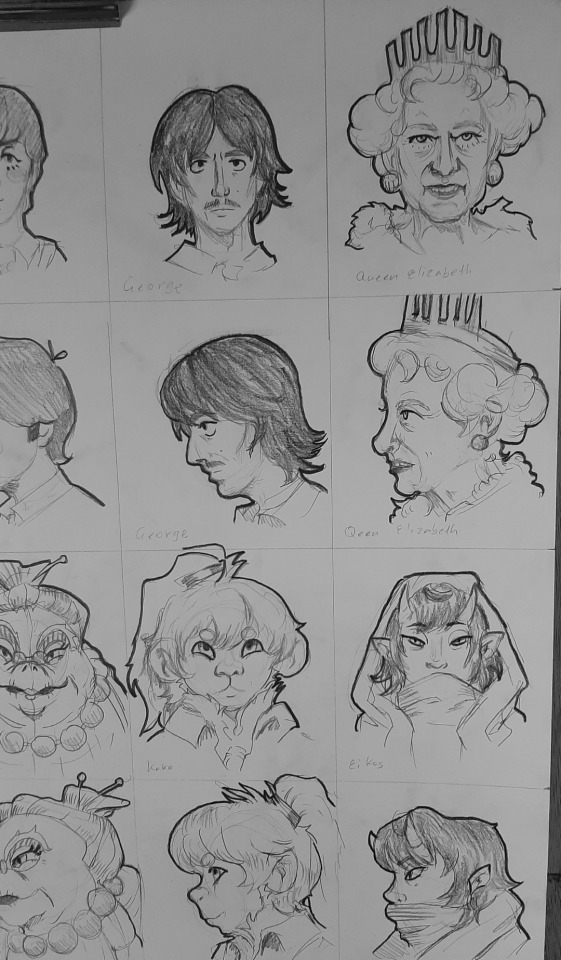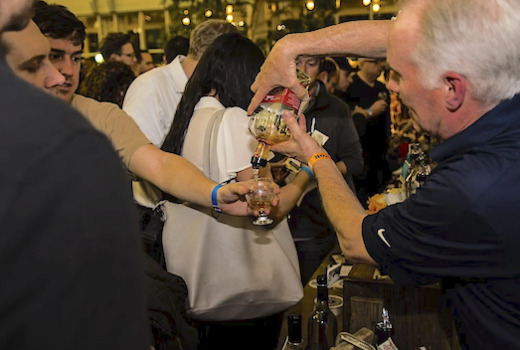#shenkar
Explore tagged Tumblr posts
Text





30 faces for illustration class. And all of my dnd gang is there!
25 notes
·
View notes
Text

Shenkar College of Engineering, Design and Art
#Shenkar College of Engineering Design and Art#shenkar college#shenkar#ramat gan#israel#design school#art school#wikipedia#wikipedia pictures#architecture#buildings#college#school
10 notes
·
View notes
Video
youtube
Jonathan Davis - Final Days
#youtube#jonathan davis#black labyrinth#final days#wes borland#miles mosley#zac baird#mike dillon#shenkar#djivan gasparyan#alternative metal#alternative rock#electronic rock#nu metal#music#music is love#music is life#music is religion#raining music#rainingmusic
2 notes
·
View notes
Text
My answer to:
Is there an age or year of your life you would re-live? Yes, certainly. I miss my years as a student. I studied visual communication in Ramat Gan (Israel). I was in my early 20s, and although the courses were very demanding and stressful for me, I miss those four years back in the early 2000s. Why? Because I was single (most of the time) and met two of my best friends (unfortunately, we’re…

View On WordPress
0 notes
Text





happy pride
#dropout#smartypants#paul robalino#rekha shenkar#demi adejuyigbe#i think paul's presentation has been the best so far tbh imo#hes so funny
37 notes
·
View notes
Text


Propaganda under the cut

@krakoansam
4 notes
·
View notes
Text
watching the bloodkeep behind the scenes and REHKA COULDVE BEEN ONE OF THE INTREPID HEROES?! like the 6 we have are perfect but just imagining how good rehka would be in the intrepid heroes seasons are just nrgghh !!!
12 notes
·
View notes
Note
I'm trying to research the historical syncretism between Ishtar and Anahita (turns out the Alireza Qaderi article I sent wasn't that good on the Iranian sources part either lol) and I've noticed soooo much of this stuff quotes outdated Assyriology, such as "Anahita: Ancient Persian Goddess and Zoroastrian Yazata", which considers Ishtar to be a "virgin mother", quoting sources from the 1960s. Are there any good sources on Ishtar/Anahita syncretism that aren't outdated? Or am I outta luck? lol
I’m afraid that the short answer is that, yeah, there isn’t really much to depend on. Long answer with some reading recommendations under the cut.
A pretty huge problem with evaluating the nature of the connection between Anahita and virtually any other figure (maybe barring Artemis in Anatolia) is that it seems the full reckoning with the fact that for most of the twentieth century researchers basically treated her as a wastebasket (a phenomenon already criticized in the 1980s) had yet to come. Generally speaking, I so far failed to find any work which would convince me there’s no reason to follow Shenkar’s warning: “It is an oft-repeated convention that Achaemenian Anāhitā was influenced by the cult and the visual representation of (...) Ištar. However, the evidence for such influence is not compelling and for the most part, late and indirect” (Intangible Spirits and Graven Images, p. 68). He doesn’t rule -some- sort of influence, but points out that if it happened, it must have ocurred later than in the Achaemenid period, and should not be automatically treated as full on acquisition of ex. one’s iconography by the other. As an example of faulty reasoning he singles out the frequent claims that the Ishtar-ish goddess on a lion depicted on a seal from Gorgippia (who is not labeled in any way) is necessarily Anahita just because her clothing is distinctly Iranian, even though she was never associated with this animal. I agree with his conclusion that it might plausibly be Nanaya, or even an uncommon but not unparalleled instance of dedication to Ishtar proper in a (largely) Iranian context (Intangible Spirits…, p. 68-69). As I understand, the Gorgippia seal is particularly commonly cited to claim influence of Ishtar on Anahita; but then the identification of the goddess on it boils down to “since it is known that they were associated, it HAS to be Anahita”. Seems like a severe case of circular reasoning.
It might be worth noting that late antique Mandaic sources - which are generally relatively reliable as far as texts involving demonization of neighbors’ deities go - do mention (demonized) Anahita, but make no reference to her having anything to do with Ishtar (same goes for Nanaya). Meanwhile, the Neo-Assyrian Mullissu-Ishtar syncretism does get a shoutout in an exorcistic formula referring to a demon described as “the Istarte who sits on the bank of the Euphrates and calls herself Mulit” (Christa Müller-Kessler, Interrelations between Mandaic Lead Rolls and Incantation Bowls in: Mesopotamian Magic: Textual, Historical and Interpretative Perspectives, p. 207-208). While I haven’t seen this category of sources discussed in relation to the phenomenon you’ve asked about, I think it would be a promising fresh approach to try to place them in a broader context of Mesopotamian-Iranian acculturation. Hopefully we’ll see such publications at some point. For what it’s worth, it does seem that at least from the 2010s on there's been a slow shift towards avoiding treating Anahita as some sort of wastebasket. Accepting that art might depict other female supernatural figures, or even ordinary women, is becoming more common (see ex. Matteo Compareti, Armenian Pre-Christian Divinities: Some Evidence from the History of Art and Archaeological Investigation, p. 196-198). The wastebasket trend is nonetheless not dead, I am afraid. While looking for additional sources for this reply, I had the questionable pleasure to be exposed to Christopher I. Beckwith’s The Scythian Empire (p. 270-271, to be specific) where he somehow tries to connect Anahita with… Shaushka…? He seems unaware that in Mitanni context the theonym Ishtar is a logogram and refers to a completely different deity, who never had anything to do with Anahita, and as a matter of fact ceased to be worshiped before Iranians even showed up in Mesopotamia. It didn’t surprise me to learn Beckwith is controversial at best, to be fair, given that this weird romp is part of an attempt to prove that Zoroaster’s name is theophoric and invokes Ishtar? This rests on high grade mental gymnastics - somehow Mitanni ruled over the Medes, you see (the easternmost dependency of Mitanni, Arrapha, was largely Hurrian-speaking and the part not covered under “largely” was, rather obviously, not related to the Medes), and thus... "Ishtar" (once again, actually Shaushka) was equated with Anahita... Seems pretty bold to connect Anahita’s development with a deity who wasn’t even worshiped anymore by the time any speakers of Iranian whatsoever pop up in the textual record and who has virtually no overlapping traits with her.
Critical comments aside, I think two specific cases of possible Mesopotamian influence of Anahita can be nonetheless pointed out.
As noted in Encyclopedia Iranica, it’s sensible to assume that the shift towards referring to Anahita as “the lady” (bānū) which must have started in the Parthian period and remained widespread at least up to early Islamic times, with the bulk of attestations being Sasanian, reflects an influence of Mesopotamian terminology. This is not actually exclusive to her, though, it seems - the same title is also attested for Spenta Armaiti (Alexander W. Marcus, Demons in Early Judaism and Christianity. Characters and Characteristics, p. 249). In other words, it’s probably safe to say we are dealing with an example of broader Iranian-Mesopotamian acculturation (perhaps with some sort of Elamite involvement too - though I am not sure if zana was actually anywhere near as common of a designation as bēlet), as opposed to a direct association developing between Anahita and a specific deity.
The other case would be the astronomical/astrological side of Anahita. It is generally assumed that the traditional assignment of names of Anahita, Ahura Mazda, Tir and Bahram to, respectively, Venus, Jupiter, Mercury and Mars reflected the influence of Mesopotamian astronomy. The fact that the name of Saturn, Kewan, is an Akkadian loanword definitely supports this assumption (Antonio Panaino, A Walk Through the Iranian Heavens. For a History of an Unpredictable Dialogue between Nonspherical and Spherical Models, p. 142). - the “godless” planet (the original Kayyamanu is not a theonym) likewise doesn’t get a yazata assigned to it. However, this once again might very well just reflect a broader pattern of acculturation - not some specific link between Anahita and Ishtar. In this case at the very least there would be a potential parallel in Tir/Tishtrya (which we talked about before) - though on the other hand I don’t think Nergal had any impact whatsoever on Bahram (Nergal did likely acquire Iranian elements in Hatra, though), and I’m not sure if Ahura Mazda necessarily acquired any traits specifically from Marduk as opposed to another pantheon head like Humban or even Zeus (who at least was used as an iconographic model for him very commonly; Intangible Spirits…, p. 61). Furthermore, I think it’s up for debate if this really proves a connection between Anahita and Ishtar, as opposed to Anahita and the purely astronomical Dilbat - who could be a representation of Ishtar but didn’t have to.
While I can’t really recommend a specific study dealing with the influence itself, the astronomical aspect of Anahita - and more broadly the position of planets in Zoroastrian and more broadly Iranian beliefs - does have a fair share of solid publications, and would probably be the best direction for further reading. Panaino’s book listed above is a good start, but his (much shorter) Planets article in the Encyclopedia Iranica is really solid too (and even mentions the elusive second Zoroastrian Venus, the explicitly demonic Xišm). Final digression: it probably helps the average quality of relevant studies that less speculation is required. Sources make it abundantly clear the astronomical aspect was integral to the understanding of Anahita’s character over… much of the world, really - from Spain to China. You could go as far as call it primary in some cases! Even though she is very sparsely attested in Sogdia, Naxie (那頡), a derivative of Nāxid, the Sogdian form of her name, appears in the Qiyao Rangzai Jue (七曜攘災決; “Secrets of Seven-Planet Apotropaism”), a ninth century Buddhist astrological compendium, as a designation of Venus (Jeffrey Kotyk, Buddhist Astrology and Astral Magic in the Tang Dynasty, p. 170). On the other end of Eurasia, her name appears in the Picatrix in the same context, though there we are apparently dealing with an Arabic transliteration of the Persian form, then adapted into Latin as “Anyhyt” (Buddhist Astrology…, p. 171-172). Ironically, you probably can make a case for it being the most well known characteristic of her even though it has little to do with her Avestan role and, arguably, her royal cult which elevated her to a position of prominence compared to other yazatas in the first place..
13 notes
·
View notes
Text
Kann es sein, dass Politik gerade den Platz der Kunst einnimmt?
Sicherlich – und das nicht im positiven Sinne. Nach dem 7. Oktober tauchten viele Bilder auf, die eliminatorischen Antisemitismus verherrlichten. Statt dass man sich von ihnen abwandte, wurden sie im künstlerischen Kontext teilweise sogar positiv aufgegriffen. Künstler*innen begannen, Bilder von vor Hamas-Kämpfern auf Paraglidern Flüchtenden, von Bulldozern, die den Grenzzaun zu Israel durchbrechen, oder von fliehenden »Nova«-Festivalbesucher*innen zu Bildern des Widerstands umzudeuten. Einige stellen sich bewusst in den Dienst der Propaganda der Hamas. Ich begreife das, was an den Hochschulen passiert, nicht als Politik im demokratischen Sinn, sondern als Rekrutierung für eine faschistische Bewegung. Es geht um den Rausch der Entgrenzung und Gruppenbildung. Aus der Masse initiiert scheint das Individuum erlöst von der Verantwortung für antidemokratische, gewaltsame Parolen, die die Tötung von Jüdinnen rechtfertigen. Das ist eine Absage an Intellektualität und Demokratie. Gleichzeitig findet auch keine Kunst statt, denn Kunst ist frei und individuell. Dafür soll die Jüdische Kunstschule Platz schaffen.
----------
Der Name »Jüdische Kunstschule« ist sehr plastisch. Ich stelle mir sofort ein Gebäude vor, mit einem Eingangsportal, dahinter junge Künstler*innen in ihren Werkstätten. So wird es zunächst wahrscheinlich nicht aussehen …
Der Name ist zunächst Ausdruck des Traums eines anderen, freieren, sichereren Rahmens der künstlerischen Ausbildung. Die Jüdische Kunstschule Berlin mit einem eigenen Gebäude wäre natürlich fantastisch. Als feste Institution könnte man Impulse setzen. Zum Beispiel würde man ganz gezielt israelische Künstler*innen einladen, die derzeit überall boykottiert werden. Die Jüdische Kunstschule startet im Herbst zunächst als Projekt für ein Semester, in Zusammenarbeit mit der UdK, in wechselnden Räumen und Onlinesitzungen, finanziert von der Berliner Kulturverwaltung. Wir haben für diese erste Phase Lehrende angestellt, außerdem Räume und Ateliers angemietet. Wir haben Klassen für unterschiedliche Disziplinen wie Malerei, Bildhauerei, Performance, Theater und Literatur. Wie es nach dem ersten Semester weitergehen kann, werden wir sehen.
Eine vollwertige Ausbildung können Sie zurzeit nicht anbieten?
Nein, aber vielleicht kommen wir noch dahin. Neben der Ausbildung ist uns die Vernetzung wichtig. Deswegen lassen wir zunächst auch Künstler*innen zu, die parallel an einer anderen Hochschule studieren oder den Abschluss vor Kurzem gemacht haben. In der Kunst hat Vernetzung einen sehr hohen Stellenwert. Wir beobachten, dass jüdische und israelische Künstler*innen stark marginalisiert und boykottiert werden und so aus vielen Zusammenhängen rausfliegen. Wenn man diese Netzwerke verliert, kommt man nicht weit. Dem möchten wir etwas entgegensetzen. Wir hoffen, dass sich zwischen den Studierenden über das gemeinsame Lernen hinaus Freundschaften und Arbeitsbeziehungen bilden.
Woher kommen die Professor*innen?
Wir haben acht Masterclasses mit sechs Professor*innen aus Israel und zwei aus Deutschland. Die meisten der israelischen Professor*innen kommen von der Bezalel Academy in Jerusalem, einer der renommiertesten Hochschulen für Kunst im Design im Nahen Osten, deren Geschichte bis in die 1930er Jahre zurückreicht, als zahlreiche Künstler*innen aus Deutschland vor den Nazis in die Region geflohen sind.
Wen haben Sie für das Projekt gewinnen können?
Da wäre zum Beispiel David Adika, der an der Bezalel das Department für Fotografie leitet. Seine Masterclass widmet sich dem Themenkomplex Fotografie, Identität und Menschenrechte. Ebenfalls thematisch wird die Klasse der Bildhauerin Hillal Toony Navok arbeiten. Sie unterrichtet an der Bezalel, aber auch am Shenkar College, in der Nähe von Tel Aviv. Es wird um Verletzlichkeit, Zuflucht und Schutz gehen. Die Studierenden werden performativ, installativ und plastisch im öffentlichen Raum experimentieren. Man merkt, dass diese Klassen sich Themen widmen, die gerade in der jüdischen Gegenwart virulent sind. Das Thema der Schutzräume wird hier aber nicht auf die konkreten jüdischen Erfahrungen etwa auf dem Campus begrenzt, sondern sehr viel offener verhandelt werden.
Wie lief die Bewerbung?
Das Zeitfenster war wegen der Förderzusagen sehr schmal, das machte es für die Bewerber*innen sehr schwierig. Teil der Bewerbung waren sowohl ein Motivationsschreiben als auch ein Portfolio. Uns haben sowohl die künstlerische Leistung als auch die politische Motivation interessiert. Wir wollten auf Notsituationen reagieren, in denen sich Studierende in ihren Lehrzusammenhängen befinden. Die Anzahl der Bewerber*innen war sehr hoch und wir mussten die Auswahl lange diskutieren. Wir hoffen sehr, das Vorhaben im nächsten Jahr fortsetzen zu können. Die meisten Bewerbungen kamen aus Deutschland, allerdings kamen auch viele aus Israel und den USA, außerdem aus ganz anderen Ländern, wie etwa der Ukraine oder der Türkei.
1 note
·
View note
Text
The Week Ahead 4/21-4/27
Here we go! This week is looking like another fabulous one, complete with festival vibes, fun, and fashion fit for a proper New Yorker's busy schedule. This is The City That Never Sleeps, so trust us - you don't want to hit snooze on this lineup...
$35 Tickets: 100+ Drinks, Live Music, Eats & More In Chelsea

Thirsty citizens, the drinks are on at The NYC Craft Beer, Wine & Spirits Festival, happening this Saturday! You'll have 3.5 Hours of Unlimited Tastings of 100+ Beers, Wines, & Spirits from 100+ Local, National & International Breweries, Wineries, & Distilleries. Think Drink Sauvage, El Buho Mezcal, Root Out Whisky, Flying Dog Brewing, Orchard Hill Cider, Ferrara Carpenter Winery, Profanity Wine & so much more, sided by eats, games, and live music...
Nili Lotan New York Sample Sale

Nili Lotan is a highly acclaimed ready-to-wear designer based in New York City. After graduating from Shenkar College of Engineering and Design in Tel Aviv, Lotan moved to New York where she led design for some of the industry’s most respected names including Ralph Lauren, Liz Claiborne and Nautica.
$39 VIP Salsa On The Roof: Open Bar, Salsa Lessons & More

The time to salsa is - NOW! Olé up, up and away to Elsie Rooftop, whose Salsa On The Roof Open Bar Party is the hottest spot in town. As the stars twinkle above, glimmer & dazzle on the dance floor as Grupo Tahona perform live salsa jams. The first hour of the shindig will include a salsa dance lesson, so learn the basics, fine tune, and flaunt, followed by an open bar pouring whatever tipples you need to feel like a winner on the dance floor...
Murder By Cheesecake

Join author Rachel Ekstrom Courage as she discusses and signs her newest book, Murder by Cheesecake: A Golden Girls Cozy Mystery. It’s up to the Golden Girls to sleuth out a way for friendship and love to win the day!
$29 Ticket To Enjoy 8 Margaritas At 8 Amazing NYC Hotspots

Saturday, sips, shenanigans - rally your crew for the Margarita March! The fiesta begins at Blind Barber - a hidden speakeasy gem. Next, hop from one margarita treasure to the next, hitting up seven more of the city’s most pour-fect bars. Each stop serves up its own unique twist on the classic margarita, ensuring that your taste buds are treated to the best. From smoky mezcal vibes to tropical infusions and spicy surprises, every bar is a flavor-packed rendezvous. Ready to shake things up? It’s going to be a tequila-tale for the books...
DUMBO Open Studios

Save the date for Dumbo Open Studios! Over 145 talented artists will open their doors to showcase their work in spaces that are rarely accessible to the public! Get ready for a weekend packed with art, exhibitions, events & video art projected onto Dumbo’s iconic infrastructure.
0 notes
Text


I just got the greatest youtube reccomendation out of fucking nowhere id never even heard of this channel, but BotCT with Brenna Lee Mulligan, Rekha Shenkar, and Aabria Iyengar?!?!?! How did the greatest video of all time get made without me getting any hint of it ahead of time!
1 note
·
View note
Video
The Innovation of Loneliness from Shimi Cohen on Vimeo.
What is the connection between Social Networks and Being Lonely? Quoting the words of Sherry Turkle from her TED talk - Connected, But Alone. (ted.com/talks/sherry_turkle_alone_together.html) Also Based on Dr. Yair Amichai-Hamburgers hebrew article -The Invention of Loneliness.
Script, Design & Animation: Shimi Cohen Translation to Portuguese: Letícia Dabés (vimeo.com/leticiatranslation //[email protected]) Translation to French: Marie-Caroline Braud (mariecarolinetranslation.jimdo.com/)
Final Project at Shenkar College of Engineering and Design.
0 notes
Text
Rajhesh Vaidhya ft. L. Shankar Shenkar - Rajesh [Carnatic]
Rajhesh Vaidhya ft., L. Shankar — Shenkar - Rajesh [Carnatic] https://youtu.be/ejYa-co7aZs?si=WgXi771GMhi9N_eg Submitted June 10, 2024 at 03:46AM by TheProcrastafarian https://ift.tt/Hwye7Tg via /r/Music
0 notes
Text
Feminine Management Powering Insurance coverage Technique at Novidea

In the present day, we're privileged to converse with Maayan Cyzs, VP Technique at Novidea who generously shares her insights as we observe Worldwide Girls’s Day.
Feminine management on the coronary heart of insurance coverage technique
“I'm obsessed with my endless studying journey,” Cyzs says. “It’s how I consider I used to be capable of advance and develop my profession in Insurtech – at all times curious, at all times in search of new angles, at all times constructing relationships, at all times gaining insights to broaden my data. I confer with it because the ‘octopus observe’. Accumulating data in expertise generally, and within the insurance coverage business particularly, was at all times part of my pure behaviour, my DNA. Maayan Cyzs serves as VP Technique main cross organisational tasks and infrastructure to offer unity and advantages throughout the enterprise to assist the corporate’s hyper development. Beforehand, Maayan held various different positions at Novidea, together with Head of International Supply and Buyer Success. Cyzs has been pivotal in serving to to solidify Novidea’s world buyer base together with her in depth data of the corporate’s platform, collaboration with groups from throughout the enterprise, and expertise managing enterprise-scale tasks. Beforehand, Maayan served as Internet & Software program Challenge Supervisor at each Matrix and Netwise. Cyzs holds an MBA from Bar-Ilan College in Human Sources Administration and Personnel Administration, and BSc in Industrial Engineering & Administration from Shenkar School. Our insurance coverage distribution platform is constructed to digitalise insurance coverage companies. Which means fuelling speedy development, optimising buyer expertise, gleaning real-time insights and actionable intelligence, and extra. “As VP, Technique at Novidea, I've constructed a formidable crew over the previous few years,” she continues. “I discovered myself searching for like-minded individuals. Whereas it wasn’t intentional, my crew is 75% girls. I’m not shy in saying that I merely consider in girls. They possess the successful mixture of abilities and love of studying to make them profitable. Working collectively is at all times inspiring as all of us proceed to develop and be taught from one another.” Novidea leverages the ability of Salesforce’s Large Know-how. It offers an entire ecosystem spanning each side of an insurance coverage enterprise, enabling full integration between customer-facing coverage transactions and the center and again workplace. In the meantime, Novidea gathers buyer information, turning it into actionable insights for delivering larger buyer worth by means of tailor-made services and products. All this occurs in a single platform which you could entry anytime from anyplace. ************** Ensure you try the most recent business information and insights at InsurTech Digital and likewise signal as much as our world convention sequence - FinTech LIVE 2024 ************** InsurTech Digital is a BizClik model ************** Be careful for the Prime 100 Girls in FinTech launching quickly! ************* Read the full article
0 notes
Text


Shenkar College of fashion and Design's Annual Fashion show. July, 1994. Photographer: Gideon Markowicz.
Source: ארכיון דן הדני, האוסף הלאומי לתצלומים על שם משפחת פריצקר, הספרייה הלאומית Dan Hadani Collection, The Pritzker Family National Photography Collection, The National Library of Israel
26 notes
·
View notes